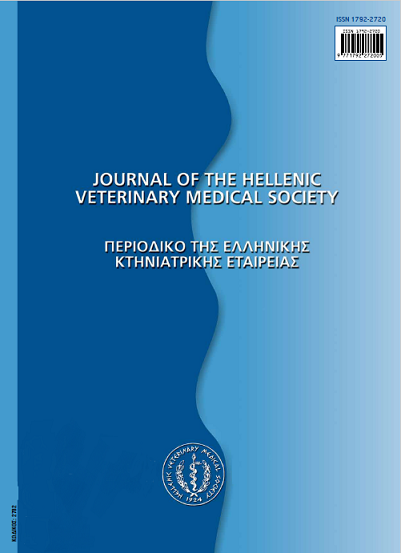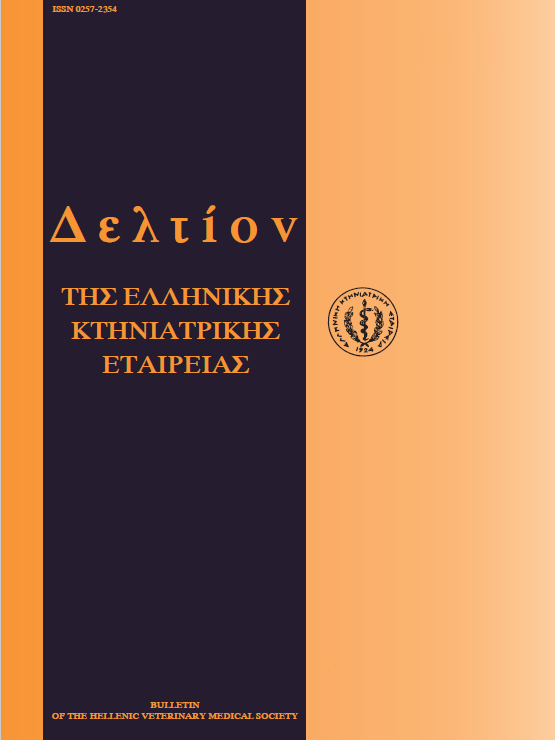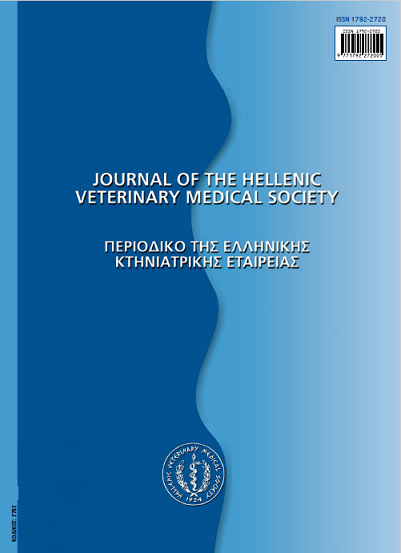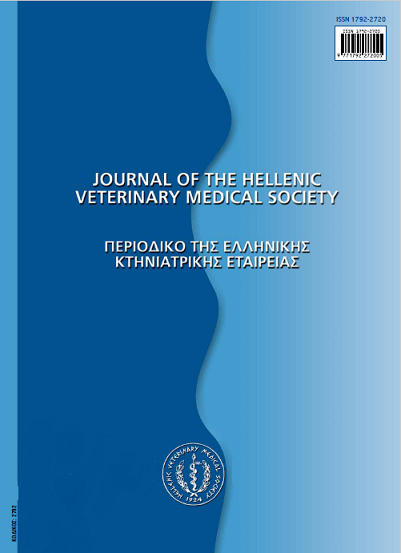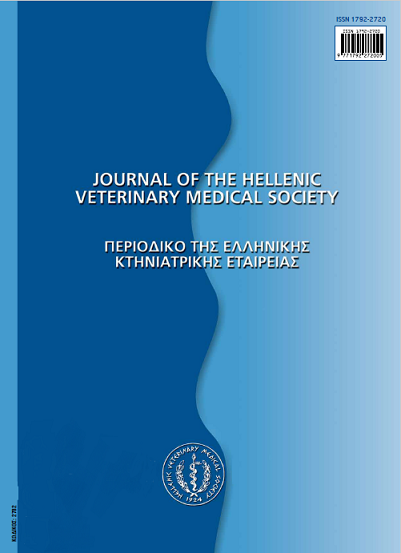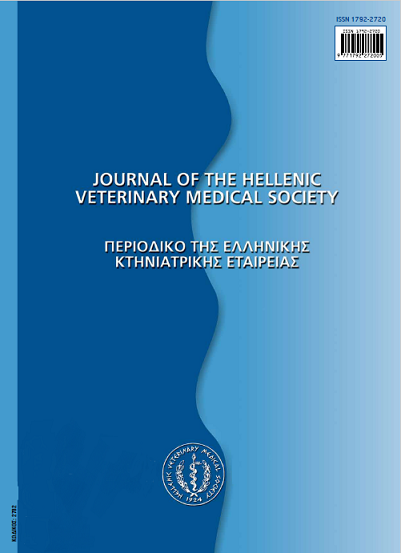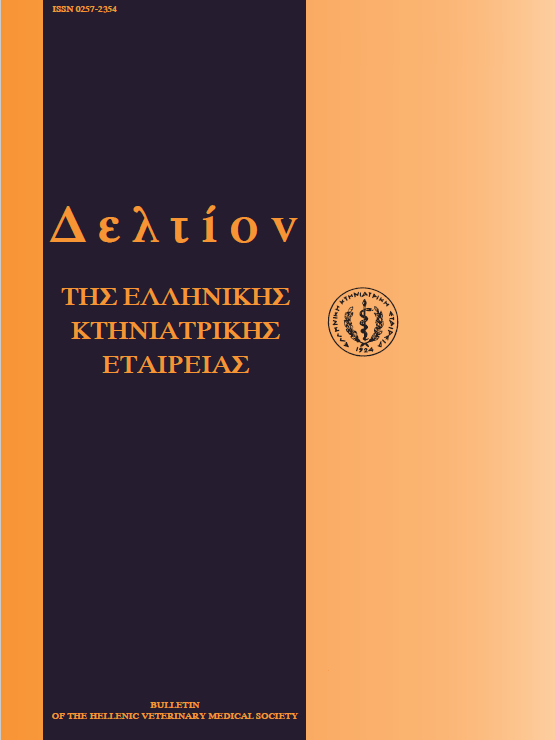Μελέτη της επίδρασης στη συγκέντρωση της αέριας αμμωνίας στους θαλάμους των χοιροστασίων από την ενσωμάτωση στην τροφή των χοίρων του φυσικού ζεόλιθου (κλινοπτιλόλιθου)
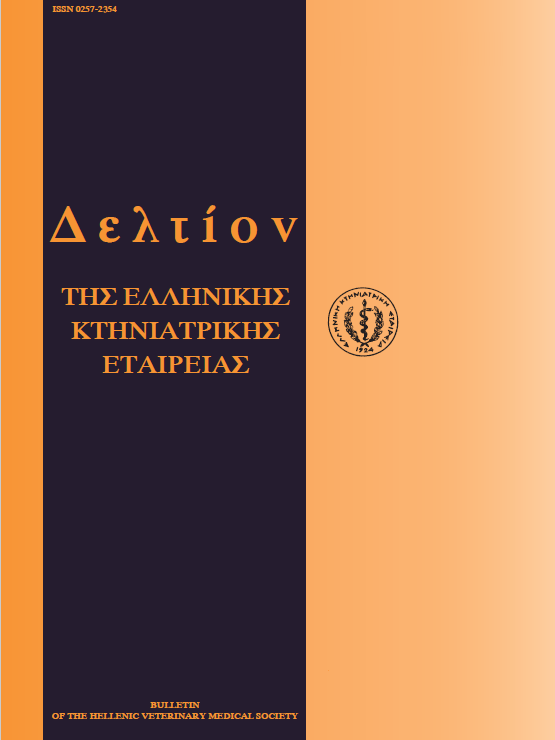
Περίληψη
Έχει διαπιστωθεί ότι όταν οι φυσικοί ζεόλιθοι προστίθενται στην τροφή των παραγωγικών ζώων βελτιώνουν τις αποδόσεις τους και βοηθούν στη μείωση της συγκέντρωσης της αμμωνίας στους θαλάμους σταβλισμού τους. Σκοπός της παρούσας μελέτης ήταν η εκτίμηση της επίδρασης στη συγκέντρωση της αμμωνίας των θαλάμων εκτροφής χοίρων, από την ενσωμάτωση στην τροφή των ζώων του φυσικού ζεόλιθου (κλινοπτιλόλιθου). Τα ζώα κατανεμήθηκαν σε δυο κυρίες πειραματικές ομάδες, ανάλογα με το αν κατανάλωσαν ή όχι τροφή εμπλουτισμένη με 2% κλινοπτιλόλιθο (ομάδες Ζ και Ν αντίστοιχα) και η κάθε ομάδα σε δυο υποομάδες (Ζ1,Ζ2και Ν1,Ν2) ανάλογα με το αν προστέθηκαν ή όχι αντιβακτηριακές ουσίες στην τροφή. Σε κάθε θάλαμο σταβλίστηκαν ζώα της ίδιας πειραματικής υποομάδας και οι μετρήσεις της αμμωνίας έγιναν με στήλες διήθησης (Dräger tubes) στο τέλος της κάθε παραγωγικής φάσης (απογαλακτισμός, ανάπτυξη, πάχυνση). Από τη συγκριτική μελέτη των αποτελεσμάτων διαπιστώθηκε, ότι στο τέλος του σταδίου της πάχυνσης, τη μικρότερη συγκέντρωση αμμωνίας εμφάνισε ο θάλαμος των ζώων της υποομάδας Z1ενώ μεταξύ των δυο κυρίων πειραματικών ομάδων, σημαντικά μικρότερη (Ρ<0,05) ήταν η συγκέντρωση της αμμωνίας στο τέλος των σταδίων ανάπτυξης και πάχυνσης, στους θαλάμους σταβλισμού των ζώων που κατανάλωσαν τον κλινοπτιλόλιθο με την τροφή τους (ομάδα Ζ).
Λεπτομέρειες άρθρου
- Πώς να δημιουργήσετε Αναφορές
-
SAOULIDIS (Κ. ΣΑΟΥΛΙΔΗΣ) K., ALEXOPOULOS (Κ. ΑΛΕΞΟΠΟΥΛΟΣ) C., PAPAIOANNOU (Δ.Σ. ΠΑΠΑΪΩΑΝΝΟΥ) D. S., KRITAS (Σ.Κ. ΚΡΗΤΑΣ) S. K., & KYRIAKIS (Σ.K. ΚΥΡΙΑΚΗΣ) S. C. (2018). Μελέτη της επίδρασης στη συγκέντρωση της αέριας αμμωνίας στους θαλάμους των χοιροστασίων από την ενσωμάτωση στην τροφή των χοίρων του φυσικού ζεόλιθου (κλινοπτιλόλιθου). Περιοδικό της Ελληνικής Κτηνιατρικής Εταιρείας, 52(4), 291–298. https://doi.org/10.12681/jhvms.15460
- Τεύχος
- Τόμ. 52 Αρ. 4 (2001)
- Ενότητα
- Research Articles

Αυτή η εργασία είναι αδειοδοτημένη υπό το CC Αναφορά Δημιουργού – Μη Εμπορική Χρήση 4.0.
Οι συγγραφείς των άρθρων που δημοσιεύονται στο περιοδικό διατηρούν τα δικαιώματα πνευματικής ιδιοκτησίας επί των άρθρων τους, δίνοντας στο περιοδικό το δικαίωμα της πρώτης δημοσίευσης.
Άρθρα που δημοσιεύονται στο περιοδικό διατίθενται με άδεια Creative Commons 4.0 Non Commercial και σύμφωνα με την άδεια μπορούν να χρησιμοποιούνται ελεύθερα, με αναφορά στο/στη συγγραφέα και στην πρώτη δημοσίευση για μη κερδοσκοπικούς σκοπούς.
Οι συγγραφείς μπορούν να καταθέσουν το άρθρο σε ιδρυματικό ή άλλο αποθετήριο ή/και να το δημοσιεύσουν σε άλλη έκδοση, με υποχρεωτική την αναφορά πρώτης δημοσίευσης στο J Hellenic Vet Med Soc
Οι συγγραφείς ενθαρρύνονται να καταθέσουν σε αποθετήριο ή να δημοσιεύσουν την εργασία τους στο διαδίκτυο πριν ή κατά τη διαδικασία υποβολής και αξιολόγησής της.




